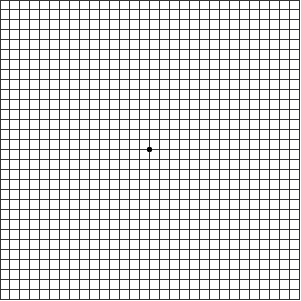Macular-Degeneration
Macular Degeneration (MD) is the leading cause of blindness and severe vision loss in Australia. One in seven people over the age of 50 are affected by the disease and the incidence increases with age and is often called Age-related Macular Degeneration (AMD).
MD refers to a group of degenerative diseases of the retina that cause progressive, painless loss of central vision, affecting the ability to see fine detail, drive, read and recognise faces.
The Macula
The Macula is the very centre of the retina. You are reading this text using your macula. It is responsible for your central, detailed vision. It is responsible for your ability to read, distinguish faces, drive a car and any other activities which require fine vision.
What is MD?
MD causes progressive damage to the macula resulting in central vision loss.
Dry MD is caused by the build-up of deposits in the layer under the retina with time and can lead to thinning of the central retina and gradual loss of central vision.
Wet MD is characterised by a sudden loss of vision and is caused by abnormal growth of blood vessels into the retina.
What are the symptoms?
- Difficulty in reading or doing any other activity which requires fine vision.
- Distortion – straight lines appear wavy or bent.
- Distinguishing faces becomes difficult.
- Dark patches or empty spaces in the centre of one’s vision.
What treatments are available for MD?
Laser treatment is sometimes indicated for the ‘wet’ form of AMD.
In the past few years there have been advancements made in slowing down and in some cases even stopping the progression of AMD.
Anti-VEGF drugs such as Lucentis (Ranibizumab) and Avastin are now available to help in the treatment of wet AMD.
Lucentis works by inhibiting the growth of the abnormal blood vessels that cause AMD. It is also used to treat swelling of the macula due to AMD. The goal of treatment is to prevent further loss of vision.
95% of patients using these drugs maintain their baseline vision and 45% will improve their baseline vision.
Optimum lighting, glasses and sometimes magnifying devices are also helpful in this condition.
Early detection is critical in order to save sight. There is no treatment for Dry MD.
Prognosis
This condition never causes complete blindness, although it does decrease central vision. The side or peripheral vision is retained. Thus a patient with severe AMD will still be able to get around independently.
Often the condition presents in one eye only and the other retains normal vision. It is important to monitor the other eye by looking at a piece of graph paper to check for increasing distortions or missing vision.
Check your Central Vision
To check your central vision, hold the grid below where you like to read. One eye at a time, focus on the central spot. The lines on the grid should appear straight and there should be no blank spots.

Risk Factors
People with a family history of Macular Degeneration have a 50 per cent chance of developing the disease. Smokers and people that have smoked are three times more likely to develop Macular Degeneration.
The MD Foundation
The MD Foundation is a not-for-profit organisation that aims to reduce the incidence and impact of Macular Degeneration in Australia.
Find out more about MD at www.mdfoundation.com.au